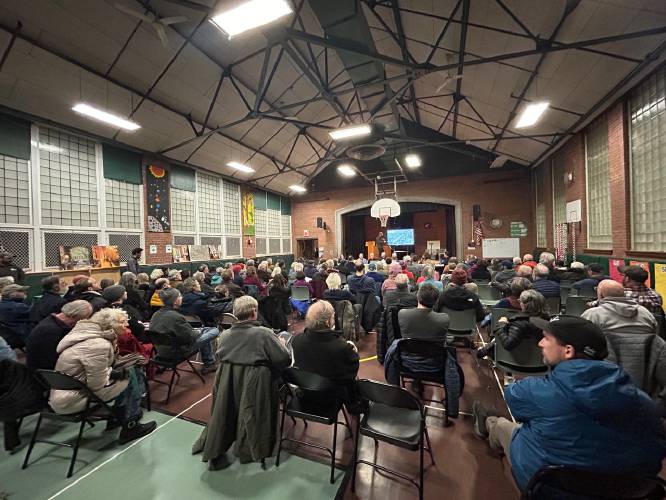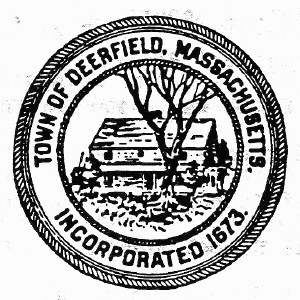My Turn: Leverett housing a counter to injustice

Leverett Planning Board meeting CONTRIBUTED/MICHAEL SEWARD
|
Published: 12-27-2023 3:51 PM
Modified: 12-28-2023 10:35 AM |
After about 100 years of exclusionary zoning, there was bound to be a reckoning. Antiquated and discriminatory housing policies among the towns of the Pioneer Valley resulted in a severe housing shortage. The housing proposal presented at a recent Leverett Planning Board meeting [“Expansive housing vision unveiled,” Recorder, Dec. 15] is a welcome relief to the housing shortage and the subsequent financial hardship it has caused. Those feeling the pressure of the housing shortage should counter housing development opposition forces by showing their support.
Leverett doesn’t have zoning for high-density housing, which is why the developer could potentially bypass the town’s zoning under Chapter 40B.
To its credit, Leverett allows two-family homes across all of its residential districts. However, the minimum lot sizes for single-family homes are 40,000 square feet in the village residential district, 60,000 square feet in the rural residential district, and 200,000 square feet in the outlying residential district, or 0.92 acres, 1.38 acres, and 4.6 acres, respectively.
More housing density in certain locations can preserve open space and prevent suburban sprawl, however. It’s fundamental to environmentally conscious smart growth principles. Towns also can mitigate the financial impacts of increasing density by pursuing the commonwealth’s Housing Choice and Chapter 43D designations.
As Leverett drafts its comprehensive master plan, zoning reform that meets the demands of the 21st century should be at the top of the list of priorities.
Zoning has been called “the new redlining” because of its discriminatory impact on housing. But zoning laws are older than the racist federal policy that denied mortgages for homes in Black neighborhoods, and minorities aren’t the only ones disadvantaged by them. The Massachusetts Constitution was amended to allow for local zoning in 1918 with Article LX; before then U.S. Secretary of Commerce Herbert Hoover released a model zoning law that spurred zoning laws across the country throughout the 1920s.
Redlining didn’t become a federal housing policy until the formation of the Federal Housing Administration (FHA) in 1934, as part of Roosevelt’s New Deal.
Early housing policy, including zoning and redlining, was crafted with the help of an organization that would become the National Association of Realtors. The National Association of Real Estate Boards even enshrined racism in its 1924 Code of Ethics with Article 34, later repealed. It stated: “A Realtor should never be instrumental in introducing into a neighborhood a character of property or occupancy, members of any race or nationality, or any individuals whose presence will clearly be detrimental to property values in that neighborhood.”
Article continues after...
Yesterday's Most Read Articles
 Greenfield homicide victim to be memorialized in Pittsfield
Greenfield homicide victim to be memorialized in Pittsfield
 Former Greenfield man granted new trial after 1995 murder conviction, walks free
Former Greenfield man granted new trial after 1995 murder conviction, walks free
 On The Ridge with Joe Judd: What time should you turkey hunt?
On The Ridge with Joe Judd: What time should you turkey hunt?
 Judge sets bail for Millers Falls assault suspects
Judge sets bail for Millers Falls assault suspects
 Franklin Tech student welds artistic bench for French King Bridge
Franklin Tech student welds artistic bench for French King Bridge
 As I See It: Between Israel and Palestine: Which side should we be on, and why?
As I See It: Between Israel and Palestine: Which side should we be on, and why?
The injustices of yesterday are still perpetuated in zoning bylaws across the commonwealth. Local control of zoning allows them to be vigorously defended by homogeneous groups of voters as well, like the one at Leverett’s Planning Board meeting. Those who would benefit from more regional housing but live elsewhere don’t get a vote.
The racist and exclusionary housing policies of the past resulted in the homogeneous town electorates who prefer to maintain the status quo, regardless of the urgent need for change and the greater good. NIMBYs weaponize zoning, conservation, and anything else for selfish ends.
In a Boston Globe letter to the editor, I characterized local control of housing by homogeneous voting groups and the legal tools available to aid them in their obstruction efforts as a systemic lack of virtue. We lack the political will at the local level to pursue the moral imperative of ensuring homes for everyone, opting instead to employ an arsenal of regulations and legal maneuvers to exclude others.
The systemic lack of virtue and the resulting obstruction of zoning reform and housing developments in the face of an urgent need demands action from those adversely affected by the housing shortage. Anyone paying too much to live in their home is dealing with the adverse impacts of exclusionary zoning. They need to start attending the public meetings among the cities and towns where housing proposals are being deliberated to show their support for more housing.
You can start by emailing your support for zoning reform to the Leverett Planning Board at planningbd@leverett.ma.us.
Michael Seward of Sunderland is a licensed real estate broker and member of the National Association of Realtors. He is not affiliated with the Leverett housing proposal or the Kittredge estate.

 Shirley and Mike Majewski: Vote for Blake Gilmore
Shirley and Mike Majewski: Vote for Blake Gilmore Michelle Caruso: Questions candidate’s judgment after 1980s police training incident
Michelle Caruso: Questions candidate’s judgment after 1980s police training incident Kathy Sylvester: Vote for expertise on May 6
Kathy Sylvester: Vote for expertise on May 6 Bernie Sadoski: Blake Gilmore is committed to his community
Bernie Sadoski: Blake Gilmore is committed to his community
